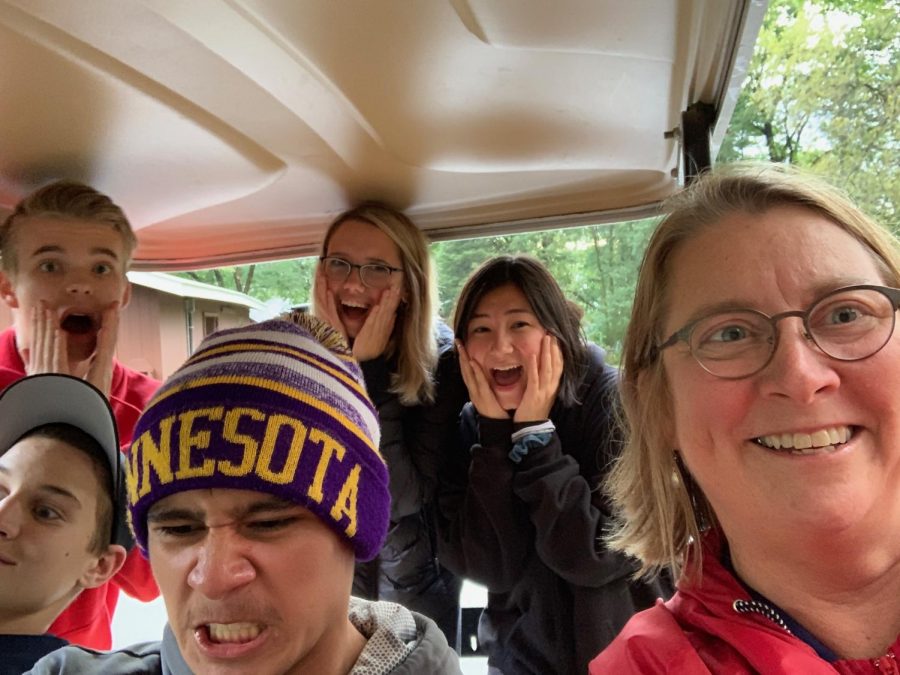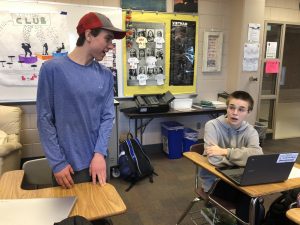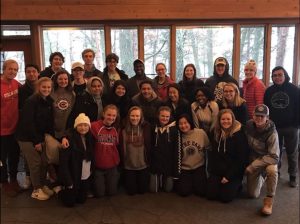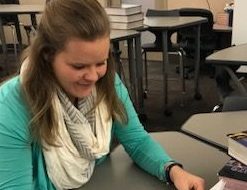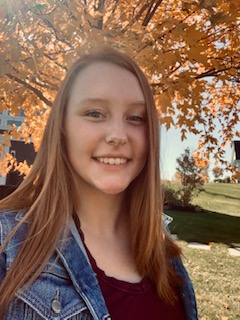Peer helpers still offer support during COVID-19
Photo submitted by Chelsea Dodds
This photo was taken Oct. 5, 2019 during a Peer Helper retreat. Assistant Principal Chris Otto teamed with a group of peer helpers for a team building scavenger hunt. They found themselves ‘trapped’ in a golf cart.
April 30, 2021
This year, the Peer Helpers have to do things quite differently due to COVID-19. Peer helpers are available to help other students throughout the school year. They are willing to help students by listening, supporting, and encouraging them in a confidential relationship.
Peer helpers began around four to five years ago due to increased mental health issues among teenagers. The helpers were created to help out other students by letting them feel like they can have a safe and confidential conversation with someone their age.
“Peer Helpers began because of a community and district-wide mental health initiative after there were a few suicides and rising mental health crises. The district wanted to involve students in the attempt to reduce the stigma surrounding mental health,” Peer Helper advisor Chelsea Dodds said.
With the pandemic in the way of this school year, the helper group has had to adapt to some new changes compared to previous years. There has been a much higher amount of online meetings and student interactions.
“During COVID our peer helpers group have had to tweak a few things in how we meet. Our monthly meetings are now held over zoom and most talks with peers are made over technology, unless they feel safe meeting to talk,” senior Ekram Ibrahim explained.
Dodds added that each meeting focuses on different topics such as self-care, suicide, grief, loss, and much more. When possible, they also have guest speakers from places such as Family Means or Youth Service Bureau join the call.
The group is expected to provide accurate information, recognize serious issues and be a good listener towards students that they are communicating with. The helpers discuss a wide variety of topics such as anxiety, depression, sexual identity, religion, and plenty others.
“Personally for me, students have reached out about a variety of topics. Racial identity, Depression/Mental Health, Religion, Family issues are just a few of the topics I have talked to students about,” Ibrahim said.
“Personally, as a junior looking at college options, I know that choosing a career path can be difficult. College decisions are another common topic I discuss with my fellow upperclassmen,” junior Gavin Browning explained.
The peer helpers have implemented some resources in the high school such as check and connect and chill week. These resources provide students with information regarding mental health and how to deal with stress management, anxiety, and depression.
“We have, however, teamed with the school is offering more educational tools for things like Check & Connect. We’ve put together resources for struggling students at SAHS and ran an event called ‘Chill Week’ in October,” Dodds said.
The Peer Helpers program has been recognized by students as a helpful resource and even Governor Walz thinks the same. Stillwater has been one of the first schools to provide a student-run helper program and it has been a success.
“It is important for high schools to have peer helpers because without them we wouldn’t have as much support for students. Peer Helpers act as the first line of defense in the school. Because Students are most likely to approach a peer before a student counselor,” Browning said.
Ibrahim thinks, “It is important for students to have a person to talk to that they feel safe with” since most students feel more comfortable speaking to a fellow student rather than an adult.
The Peer helpers have made a positive impact on the students and are available to reach out to both in-person and online this year. For more information visit the SAHS peer helper Instagram as well as their website.


